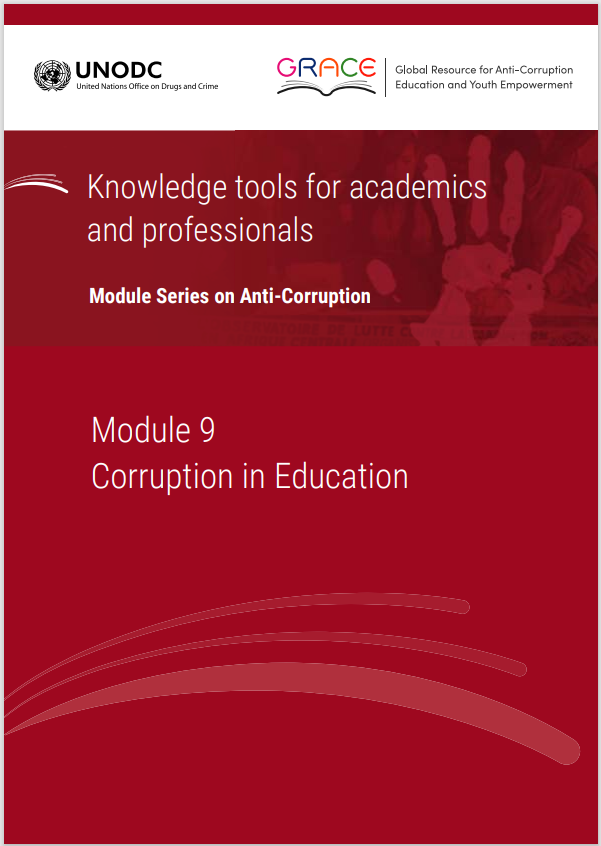This module is a resource for lecturers
Possible class structure
This section contains recommendations for a teaching sequence and timing intended to achieve learning outcomes through a three-hour class. The lecturer may wish to disregard or shorten some of the segments below in order to give more time to other elements, including introduction, icebreakers, conclusion or short breaks. The structure could also be adapted for shorter or longer classes, given that class durations vary across countries.
Introduction to Corruption and Education (15 minutes)
- Ask students what they think corruption is in general and what they think corruption in education is in particular (if possible, use proposed pre-class exercise 1 or 2). Give examples of different manifestations of corruption in education.
- Present a basic outline of the Module and learning outcomes.
Recognizing the Symptoms of Corruption in Education (20 minutes)
- Ask students whether their country has corruption in education, and how their country compares to other countries or do an interactive activity like suggested in Exercise 1.
- Present the main manifestations of corruption in education.
The Mechanisms and Impacts of Corruption in Education in Real Life (45 minutes)
- Either have a short lecture by the lecturer, or a short presentation by students with in-class preparation time, on recognizing the different institutions and levels were corruption in education occurs, as well as the actors and the types of exchanges that exist (Hallak and Poisson, 2007).
- Ask the students to discuss what they think the consequences of corruption in education are (either work in teams, or collect individual views through Padlet or Google Doc and bundle them in categories which should then be presented to all students).
- Select and present a case study from those suggested in the Exercises section. Engage students to answer questions and lead the discussion, summarizing the main points.
Causes of Corruption in Education (30 minutes)
- Divide students in teams and give them flipcharts. Ask half of the teams to think about and outline the factors driving actors in education to engage in corruption. Ask the other half to think of policies which they believe can deter corruption in education. Ask pairs of teams from each side to present their conclusions (use visual aids like arrows on flipcharts or pair students in such a way that one student delivers "the problem" and the other student delivers "the solution").
Possible Policies (10 minutes)
- Present the main types of possible anti-corruption policies in the education sector.
- Pick real-world examples of policies and discuss them with the students. Ask the students if these policies could be successfully implemented in their university or country.
Case Study (45 minutes)
- Select one of the case studies suggested in the Exercises section to examine and discuss in class (e.g., the one in Exercise 2 is likely to spark discussion). Lecturers can either choose the case study, or ask the students to vote and select one.
- Provide short in-class review time of the case study, then ask students to discuss among themselves for a few minutes. What are the issues they see?
- Make a list of the issues to discuss, contributing to the discussion to ensure the main issues are raised and covered.
- Assign different questions to different small groups, allow additional time for discussion, and ask each group to assign a team member as rapporteur to share the group's ideas.
- Discussion will at some point likely begin to shift from what the problem is to what to do about the problem, by for example addressing what immediate action to take or what long-term responses are appropriate. This discussion may arise when a student says 'nothing can be done' or 'that is the way things are'. When this shift occurs, lecturers can do a short review of the possible responses to corruption, discussed in the Key issues section. Each group should then take at least one possible response and evaluate the potential impact and difficulties it poses.
Conclusions and Assessment Instructions (15 minutes)
- Introduce and explain the student assessment.
- Conclude by providing a summary overview of key issues discussed and close with a few key take-away points, especially in terms of anti-corruption policies.
 Next: Core reading
Next: Core reading
 Back to top
Back to top
